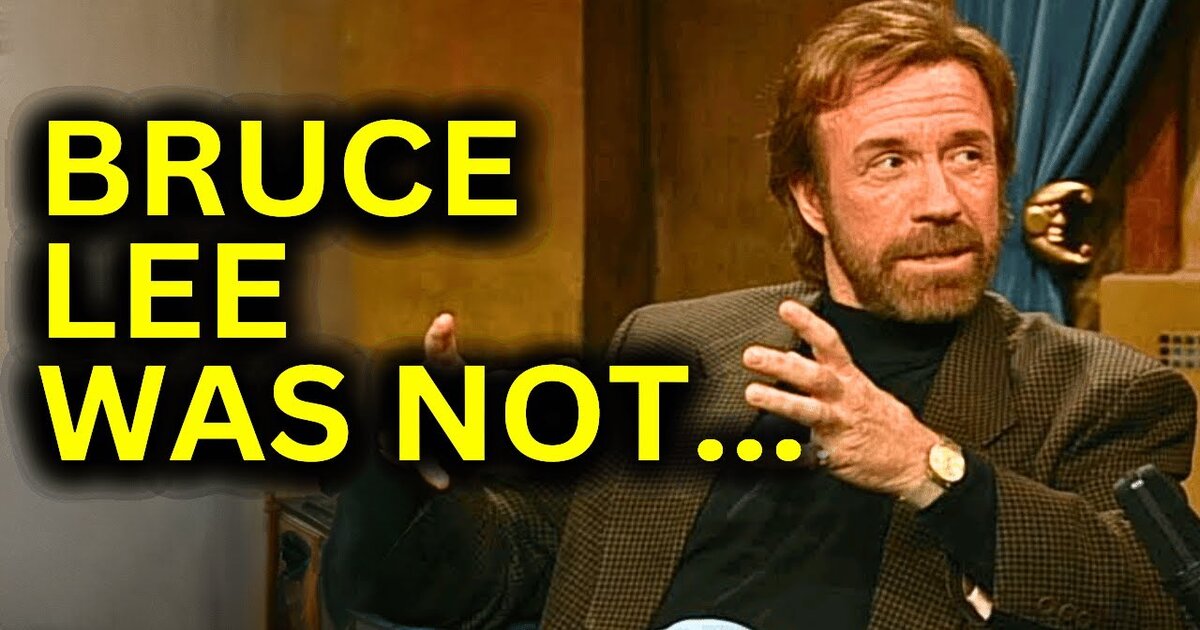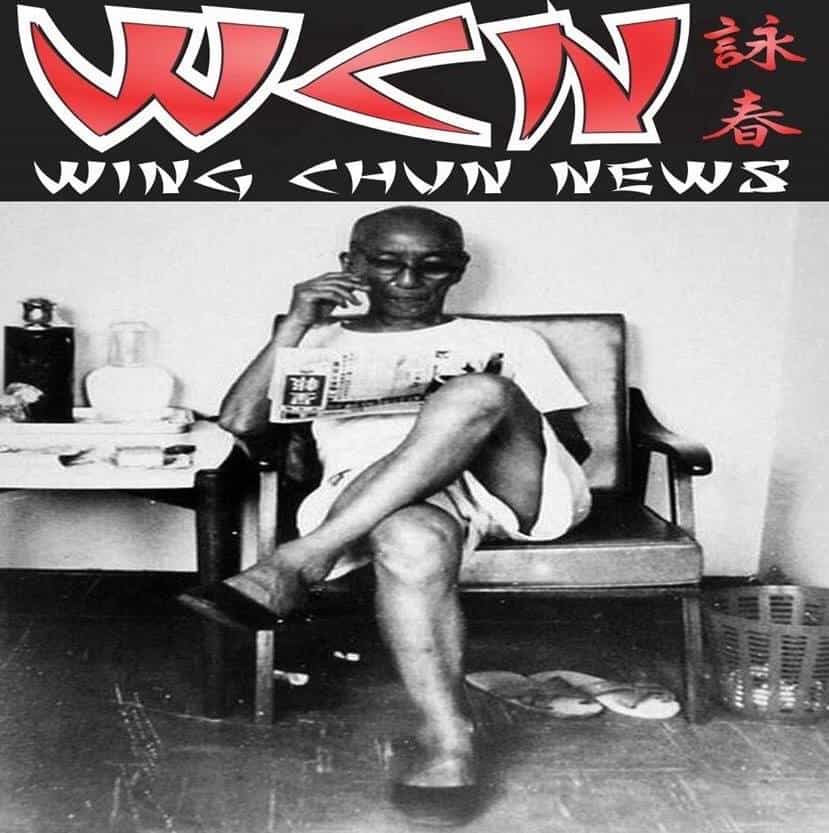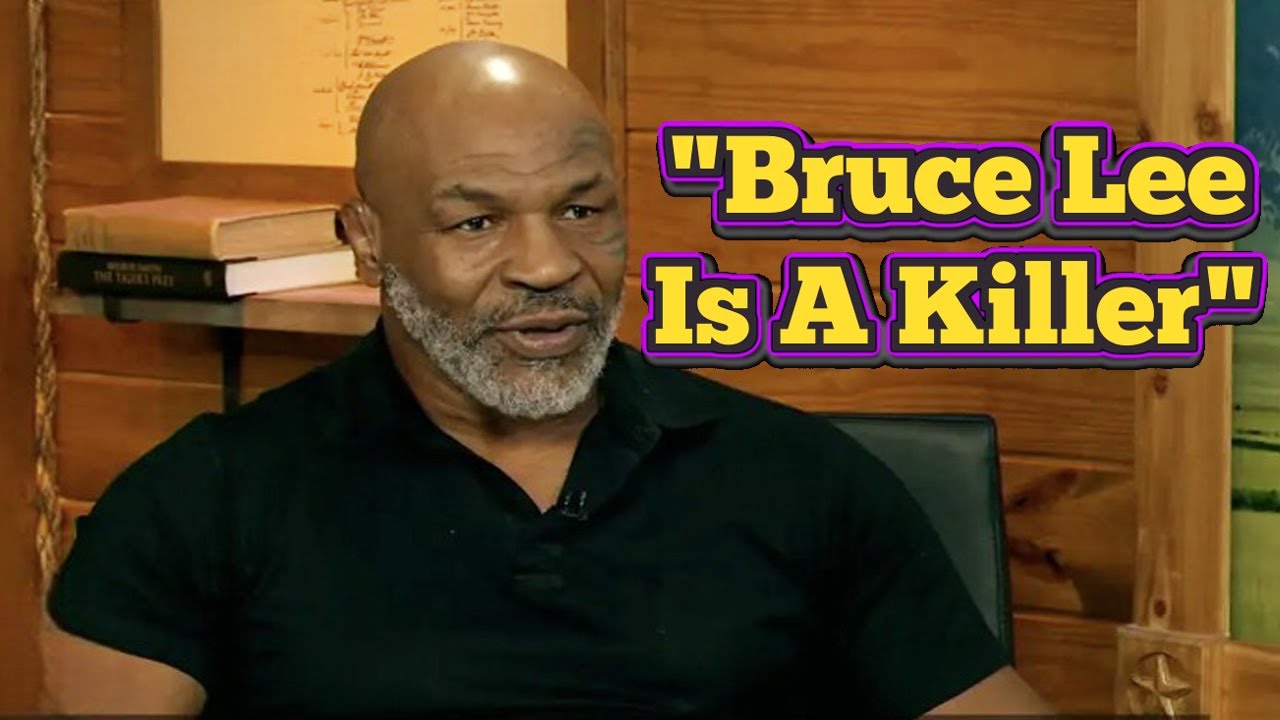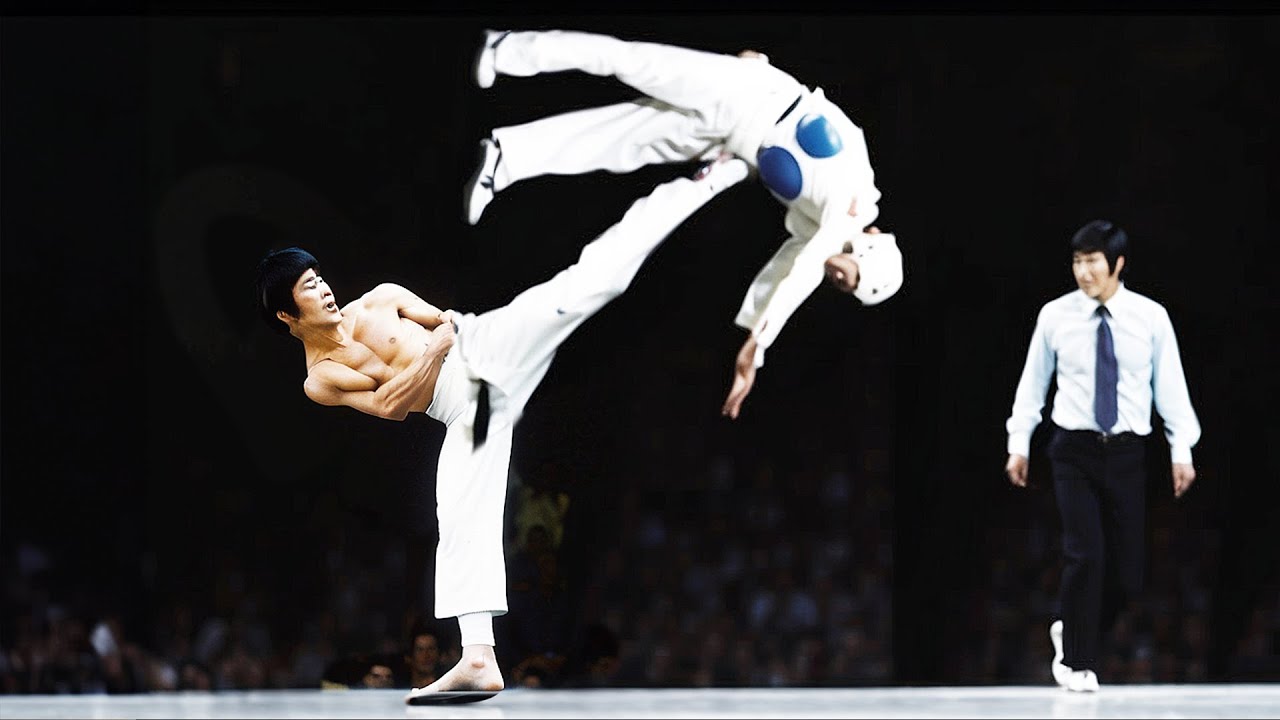The transcript below is from the video “83 Year Old Chuck Norris Reveals The Shocking TRUTH About Bruce Lee!” by The Ultimate Expedition.

The Enigma of Bruce Lee’s Death
Bruce Lee, the most influential martial artist of all time and a pop culture icon of the 20th century, left a legacy that continues to inspire millions. However, his sudden and mysterious death shocked the world, leaving many questions unanswered. Now, after years of silence, Chuck Norris, a martial arts legend in his own right, has finally broken his silence to reveal the shocking truth behind the tragic and mysterious deaths of Bruce Lee and his son, Brandon Lee. Get ready for an untold story that will challenge everything you thought you knew about these legendary figures and their tragic deaths. The Unlikely Friendship: The True Story of Bruce Lee and Chuck Norris.
Before we reveal the shocking truth about Bruce Lee’s death, it’s important to understand the remarkable friendship that existed between Bruce Lee and Chuck Norris. Bruce Lee and Chuck Norris are undeniably two of the most iconic martial artists and action stars in history. But how did their extraordinary friendship begin, leading to one of the most legendary showdowns in cinema history? The story dates back to the late 1960s when both Lee and Norris were emerging as stars in their respective fields.

At that time, Bruce Lee had already gained recognition in Hong Kong with his first two films, “The Big Boss” and “Fist of Fury,” and was eager to broaden his horizons. On the other hand, Chuck Norris was a karate world champion who had achieved success in numerous tournaments and titles in the US and abroad. Their paths first crossed at the All-American Karate Open Championship in 1967, where Norris emerged victorious while Lee delivered a captivating martial arts demonstration. Impressed by each other’s abilities, they met after the event and engaged in discussions about martial arts and combat techniques.
As they conversed, they discovered a shared passion for martial arts and decided to train together in Lee’s backyard. Lee, known for his willingness to learn from others, absorbed valuable tips from Norris, particularly in high kicking techniques. Prior to this, Lee had believed that a martial artist should never kick above the waist, but Norris enlightened him on the significance of being able to kick anywhere, especially if an opponent leaves their head vulnerable. Within six months of training, Lee’s high kicks had reached the same level of proficiency as Norris’s.

Simultaneously, Norris was captivated by Lee’s speed, power, and philosophy. He embraced Lee’s innovative style of Jeet Kune Do, a martial art philosophy and style developed by Lee himself. Jeet Kune Do is characterized by its principles of simplicity, directness, and freedom, aiming to transcend the constraints of traditional martial arts. A defining aspect of Jeet Kune Do is the concept of interception, which involves attacking the opponent’s attack or intention before it reaches its target. This demands heightened awareness, speed, timing, and adaptability. Practitioners of Jeet Kune Do train to intercept using various techniques such as punches, kicks, elbows, knees, traps, locks, and throws.
Beyond being a martial art, Jeet Kune Do advocates for open-mindedness, flexibility, creativity, self-knowledge, and self-improvement. Norris also admired Lee’s dedication and passion, leading to a deepening of their friendship. Their camaraderie culminated in a collaboration in 1972 when Lee invited Norris to star in his third film, “Way of the Dragon,” which Lee also wrote and directed. This Hong Kong martial arts action comedy film became a monumental success at the box office and showcased the immense talent and charisma of both Lee and Norris.

“The Way of the Dragon” narrates the story of Tang Lung, a young martial artist from Hong Kong who travels to Rome to aid his friends in protecting their restaurant from a menacing crime boss. The film climaxes with a legendary showdown between Tang Lung and the crime boss’s hired assassin, Colt, portrayed by Norris, in the Coliseum. Not only was “The Way of the Dragon” a commercial triumph, but it also solidified its place as one of the greatest martial arts films of all time. It exemplified Bruce Lee’s philosophy of adaptability, creativity, and self-expression while showcasing some of the most iconic fight scenes in cinematic history.
The unlikely friendship between Bruce Lee and Chuck Norris not only left an indelible mark on the world of martial arts and cinema but also serves as a testament to the power of mutual respect, shared passion, and unwavering dedication.

The Mysterious and Untimely Death of Bruce Lee
Bruce Lee, widely regarded as the most influential martial artist of all time and a pop culture icon of the 20th century, played a pivotal role in bridging the gap between East and West. His impact on the portrayal of Asians in American films was revolutionary.
Lee shattered prevailing stereotypes of Asian men as emasculated, childlike, or domestic servants, and instead showcased them as “tough, strong, and sexy,” as noted by University of Michigan lecturer Hye Seung Chung. His popularity gave rise to a new stereotype – that of the martial artist. However, the sudden and mysterious death of Bruce Lee at the young age of 32 sent shockwaves across the globe, leaving behind a plethora of unanswered questions.
It happened that on May 10, 1973, during a session for Enter the Dragon at a film studio in Hong Kong, Lee collapsed and was subsequently rushed to the hospital. After receiving treatment, he appeared to have recovered. Just over two months later, on July 20, 1973, Lee was in Hong Kong to discuss a film project with actor George Lazenby and producer Raymond Chow. After a productive meeting with Chow, Lee proceeded to his colleague Betty Ting Pei’s home to go over the script.

Tragically, Lee never made it to the dinner he was scheduled to attend with Lazenby. When Chow went to check on him, Lee could not be roused. Despite efforts to revive him, Lee was pronounced dead upon arrival at Queen Elizabeth Hospital. The untimely passing of Bruce Lee not only marked the loss of a martial arts legend but also left a void in the world of entertainment and raised numerous questions about the real cause of his passing. Norris Mourns Bruce Lee: One person deeply affected by Bruce Lee’s death was Chuck Norris, who paid tribute to Lee in various interviews and publications.
Norris described Lee as a phenomenon and a genius who revolutionized martial arts and cinema. He also expressed his regret at not being able to see Lee grow older and achieve more. Following Bruce Lee’s untimely death, Chuck Norris maintained a close bond with Lee’s family, particularly with his son Brandon Lee. Despite being just 8 years old when his father passed away, Brandon inherited his father’s passion for martial arts and acting. He pursued a career in acting, starring in notable films such as “Showdown in Little Tokyo”, “Rapid Fire”, and “The Crow”.
Chuck Norris played a significant role in Brandon’s life, serving as a mentor and friend, supporting him in both his professional and personal endeavors. Tragically, Brandon Lee’s promising future was cut short when he passed away at the age of 28 due to a fatal accident on the set of “The Crow”. The accidental shooting deeply impacted Norris, who considered Brandon as a son and was immensely proud of him. The loss of both Bruce and Brandon Lee left Norris heartbroken, as he attended Brandon’s funeral to pay his respects and expressed his hope that they were together in heaven.

The mysterious circumstances surrounding Bruce and Brandon Lee’s death continue to intrigue many, prompting ongoing speculation about the truth behind his untimely passing. Chuck Norris’s Theory: Chuck Norris recently revealed his perspective on the tragic death of his close friend, Bruce Lee, at a San Diego Comic-Con convention during a martial arts demonstration. Norris, who was well-acquainted with Lee’s health issues and lifestyle, shed light on the circumstances surrounding Lee’s untimely demise.
According to Norris, Lee sustained a back injury in 1968 while performing a weightlifting exercise known as “good mornings,” resulting in a ruptured disc in his spine. This injury led to prolonged pain and limited mobility, ultimately requiring surgery and medication for recovery. Despite medical advice to rest and allow proper healing, Lee’s stubbornness and impatience drove him to continue rigorous training and intense physical exertion. Norris emphasized Lee’s relentless pursuit of perfection in all aspects of his life, including his physique.
Lee’s fast metabolism prompted him to consume high amounts of protein and supplements like ginseng and royal jelly to enhance his energy and performance. Additionally, he maintained a high water intake, sometimes consuming up to 10 liters daily to detoxify his body. During his time in Hong Kong preparing for his next film, “Game of Death,” Lee encountered a severe headache and sought relief from actress Betty Ting Pei, with whom he had a close relationship.
Unbeknownst to Lee, the painkiller he ingested contained aspirin, to which he was allergic. The combination of medications, supplements, and hydration allegedly triggered a reaction in Lee’s body, leading to cerebral edema, or swelling of the brain. Cerebral edema is a serious condition characterized by the accumulation of fluid in the brain, resulting in increased pressure within the skull. This can lead to brain cell damage, reduced blood flow, and oxygen deprivation, posing life-threatening implications.
While Norris’s account provides one perspective on Lee’s death, it has been met with several other skepticism.

Uncovering the Truth
New Perspective on Bruce Lee’s Death. For years, the circumstances surrounding the premature passing of martial arts icon Bruce Lee have been the subject of intense debate and speculation. However, biographer Matthew Polly has introduced a new perspective that challenges previous explanations and provides insight into the true cause of Lee’s demise.
In his book “Bruce Lee: A Life”, Polly delves into the details of Lee’s final days, offering a fresh perspective on the events leading up to his tragic passing. He presents a wealth of evidence to support his theory, drawing attention to key aspects of Lee’s life and health that point towards the likelihood of heat stroke as the true cause of death. One significant piece of evidence highlighted by Polly is Lee’s decision to undergo surgery to remove his sweat glands.

Motivated by a desire to maintain a certain appearance on screen, Lee opted to have his armpit sweat glands removed, thereby compromising his body’s natural ability to regulate temperature through sweating. This detail becomes particularly relevant in light of the hot and humid climate of Hong Kong, where Lee spent a significant amount of time. Polly argues that this surgical alteration left Lee more vulnerable to the effects of heat exposure, setting the stage for a potential heat stroke.
Furthermore, Polly draws attention to an incident preceding Lee’s death in which he experienced symptoms consistent with heat stroke. Just weeks before his passing, while working on the film “Enter the Dragon”, Lee suffered a collapse and subsequent diagnosis of cerebral edema. However, Polly suggests that this episode may have actually been a manifestation of heat stroke, with the diagnosis of cerebral edema potentially masking the true nature of the underlying condition.

Drawing on expert opinion and medical insights, Polly underscores the potential link between Lee’s previous heat-related episode and the ultimate events leading to his death. The circumstances surrounding Lee’s final moments also come under scrutiny in Polly’s analysis. Notably, Lee’s passing occurred on a sweltering day in July, with temperatures soaring to 33.9°C (93°F). Polly highlights the details of Lee’s actions leading up to his collapse, including his ingestion of a medication containing aspirin and a tranquilizer, as well as his choice to lie down under a thick blanket.
By piecing together these elements, Polly constructs a compelling narrative of how these factors may have converged to precipitate a fatal heat stroke, exacerbated by the masking effects of the medication. Crucially, Polly’s theory finds support in the findings of Lee’s autopsy report. Absence of allergic reactions and normal levels of medication in Lee’s system align with the absence of an overdose or adverse drug reaction as contributing factors to his death. Instead, the significant swelling of Lee’s brain, as documented in the autopsy report, lends further credence to the possibility of a heat-related cause.
Expert medical opinions, including that of Dr. Donald Langford, further bolster Polly’s argument by acknowledging heat stroke as a plausible explanation for Lee’s demise. In reevaluating the circumstances surrounding Bruce Lee’s death, Matthew Polly’s theory offers a compelling alternative to conventional explanations. By meticulously piecing together various facets of Lee’s life and health, Polly presents a compelling case for considering heat stroke as the true cause of Lee’s untimely passing.

The Triad Theory
Arguably one of the most captivating and widely discussed theories surrounding the untimely demise of martial arts legend Bruce Lee is the involvement of the Triads, a notorious Chinese organized crime syndicate with a stronghold in Hong Kong and other parts of Asia. This theory posits that Lee’s contentious relationship with the Triads during his time in Hong Kong ultimately led to his tragic end.
It is suggested that Lee’s unorthodox approach to Chinese martial arts in his films had irked the Triads, who viewed his unconventional techniques and disregard for traditional martial arts conventions as a direct challenge to their authority. Furthermore, Lee’s bold confrontation of established martial arts masters and schools in Hong Kong, rumored to have ties to the Triads, further escalated tensions between him and the criminal organization.

His films were perceived as a direct threat to the Triads’ dominance within the martial arts community, as well as a blatant affront to their cultural heritage. Another compelling angle to this theory revolves around the Triads’ alleged attempts to extort money from Lee. As a highly successful and affluent actor and producer, Lee’s refusal to comply with the Triads’ demands for protection money posed a direct challenge to their control over the lucrative film industry in Hong Kong.
Additionally, Lee’s plans to expand his career to Hollywood and other international markets threatened to diminish the Triads’ influence over him, potentially prompting them to perceive him as a defiant adversary in need of retribution. A third dimension of the Triad theory suggests that personal vendettas or conflicts with individual members of the Triads may have fueled their desire to eliminate Lee.

His outspoken nature and refusal to back down from confrontations could have led to clashes with influential figures within the organization, resulting in simmering animosity and a thirst for revenge. Furthermore, rumors of romantic entanglements with women associated with the Triads, such as actress Betty Ting, may have stoked jealousy and resentment among members of the criminal syndicate, further escalating tensions between Lee and the Triads.
The manner in which the Triads purportedly orchestrated Lee’s demise is equally intriguing. The theory posits that they may have employed various methods, including poisoning, shooting, stabbing, or strangling. However, the most chilling possibility is the implementation of a technique known as dim mak, or the death touch, involving precise strikes to specific pressure points on the body capable of inducing internal damage or even fatality.

It is speculated that the Triads may have enlisted a skilled martial artist, potentially a rival or former student of Lee, to administer the dim mak either directly or indirectly, leading to his tragic demise. Supporters of the Triad theory point to several circumstantial pieces of evidence and testimonies that seemingly bolster its credibility. Reports of death threats and acts of sabotage aimed at disrupting Lee’s film projects attributed to the Triads lend credence to this theory.
Additionally, Lee’s prior experience with cerebral edema, suspected to be a failed attempt by the Triads to execute the dim mak technique, coupled with his complaints of headaches and dizziness on the day of his passing, further align with the narrative proposed by this theory. Furthermore, Lee’s visit to a restaurant allegedly owned by the Triads on the fateful day raises suspicions of poisoning or a direct confrontation with members of the criminal organization.

The presence of bruising and needle marks on Lee’s body following his death has been interpreted as potential evidence of the dim mak technique or efforts by the Triads to conceal their involvement in his demise. The subsequent tragic events that unfolded, including the fatal shooting of his son Brandon Lee on a film set in 1993 and the mysterious disappearance or deaths of individuals associated with Lee who may have possessed incriminating knowledge about the Triads, further fuel speculations surrounding their potential involvement in Bruce Lee’s death.
As compelling as the Triad theory may seem, it is essential to approach it with a critical eye, considering its speculative nature and the absence of concrete evidence conclusively linking the Triads to Bruce Lee’s demise.

The Lee Family Curse
The belief in curses and superstitions has been a part of human history for centuries, and the Lee family curse is one such mysterious and tragic legacy that has haunted the ancestors of Bruce Lee for generations.
According to this theory, the male members of the Lee family are targeted by an evil spirit, leading to their untimely and violent deaths. This curse has allegedly claimed the lives of several Lee relatives, including Bruce and his son Brandon. But where did this curse originate, and is there any evidence to support it? The origins of the Lee family curse theory can be traced back to Chinese folklore and superstition.
One version of the story suggests that the curse dates back to the Tang Dynasty, where a famous general named Lee Yuen, known for his loyalty and bravery, became the target of a powerful sorcerer’s curse. The sorcerer vowed that Lee Yuen and his descendants would never live past the age of 33, thus setting the stage for the tragic fate of the Lee family. Another variation of the story ties the curse to a general named Lee Su during the Song Dynasty, who betrayed his emperor and faced a curse from the emperor’s court wizard.

This curse condemned Lee Su and his offspring to die by fire or metal, further perpetuating the tragic legacy that would befall the Lee family for generations to come. While the veracity of these stories remains uncertain, they have undeniably influenced the beliefs and behaviors of the Lee family throughout history. Bruce Lee’s parents, Lee Hoi Chuen and Grace Ho, were deeply spiritual and superstitious, especially following the death of Bruce’s older brother before Bruce was born.
Some speculate that his brother’s untimely death may have been attributed to the curse, further cementing the family’s fear of its malevolent influence. In an effort to protect Bruce from the perceived threat of the curse, his parents took measures such as giving him a female nickname, “Little Phoenix,” dressing him in girls’ clothes, and even avoiding calling him by his real name, Junfan. These actions were taken in hopes of tricking the malevolent spirit into believing that Bruce was a girl and thus sparing him from its grip.

Additionally, Bruce’s parents sought guidance from fortune tellers and astrologers who warned them of his auspicious yet perilous destiny, advising them to be vigilant about his health and safety. Despite the ominous shadow cast by the alleged curse, Bruce Lee’s indomitable spirit led him on a path of rebellion and adventure. Moving to the United States at 18, he immersed himself in studying and teaching martial arts, eventually developing his own style known as Jeet Kune Do.
His pursuit of a Hollywood career was met with both discrimination and groundbreaking success, as he shattered stereotypes and became a legendary figure in cinema. Tragically, some proponents of the Lee family curse theory argue that Bruce’s death was not a mere accident but rather a manifestation of the curse. They point to eerie coincidences such as his passing at the same age as his grandfather and his premonition of death in a dream shared with his wife.

Alleged sightings of a haunting presence further fuel this belief, as it is claimed that Bruce saw a demon in his mirrors and depicted similar encounters in his films. The Lee family curse theory gained further traction with the untimely death of Brandon Lee, Bruce’s son, who tragically lost his life in a freak accident while filming “The Crow.” Parallels drawn between Brandon’s fatal incident and his father’s demise during a film scene add fuel to the belief in the curse.
The timing of Brandon’s death shortly before the release of a biopic about Bruce further deepens the sense of tragedy surrounding the Lee family. The question remains: is the Lee family truly cursed, or are these simply tragic coincidences? The mysterious and tragic legacy of the Lee family continues to captivate the public imagination, sparking debates and discussions about fate, superstition, and the power of belief. What are your thoughts on the Lee family curse? Do you believe in curses and superstitions, or do you think these are simply coincidental tragedies?
What the video here — > 83 Year Old Chuck Norris Reveals The Shocking TRUTH About Bruce Lee!








